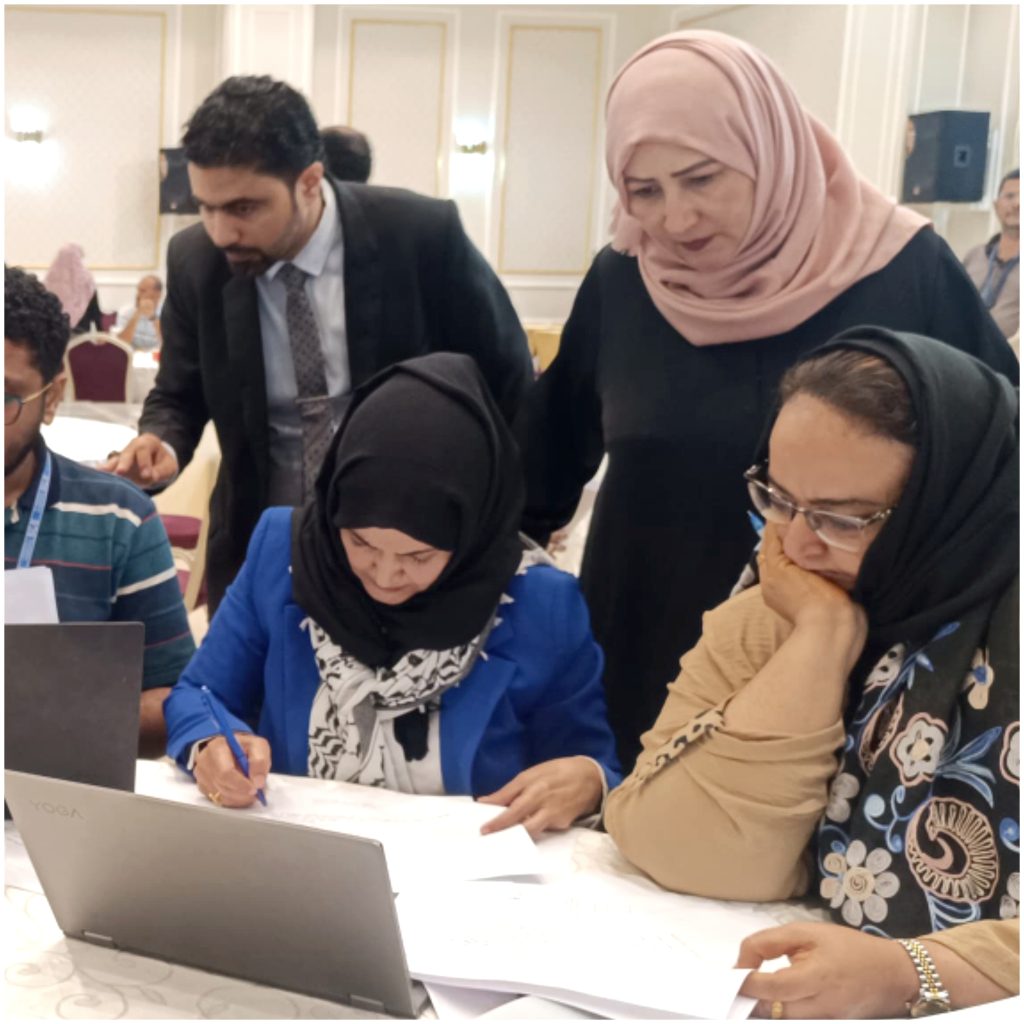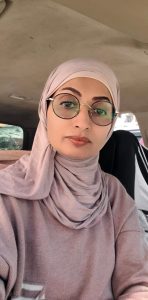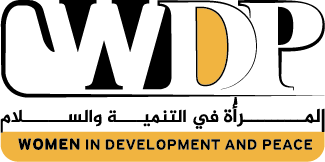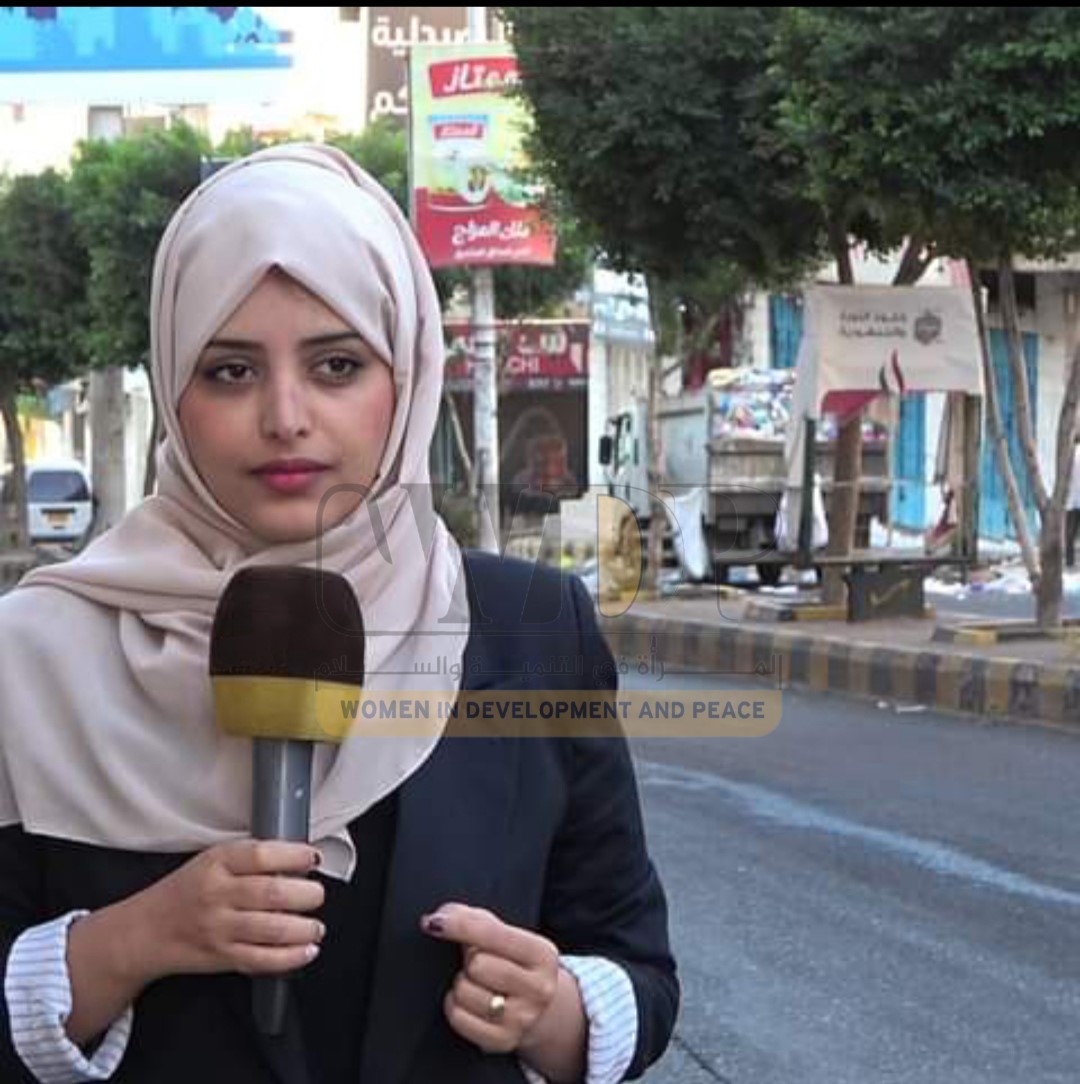Women in Development and Peace – Ahmed Bajoaim
The Yemeni media scene is witnessing a tremendous expansion in various fields, and female media professionals have a role in this growing momentum. They possess unique skills and high-quality experiences, having proven themselves in the field of investigation and field reporting. They have provided comprehensive coverage of the conflicts, crises, and developments in the Yemeni and possibly global arena. Thanks to these competencies, Yemeni female media professionals have transitioned from being mere field correspondents to becoming guides for the media platform and actively participating in shaping public opinion on the issues they advocate for.
Despite the numerous challenges faced by Yemeni female journalists in the field, including cultural, social, and sometimes political obstacles, their determination to achieve justice and convey the truth to the public knows no bounds.
In this report, we shed light on the trends of Yemeni women journalists in the field. Through analyzing their roles, challenges, and contributions to media and society, we showcase successful examples that have overcome barriers in their fieldwork.
Women Role Models in Media Work
Yemen is enriched with many pioneering women across various fields. Media also includes women who have achieved remarkable accomplishments and received international acclaim in their media work and on the ground. Among them is Hadeel Al-Yamani, who was awarded the Press Courage Award in the United States in 2017 by the International Women’s Media Foundation. This recognition celebrates outstanding female journalists worldwide. Hadeel Al-Yamani earned this award through her merit and dedication as a Yemeni journalist.
Maya Al-Abssi, a prominent figure in the Yemeni media field, has risen to prominence in recent years. She is well-known to both local and Arab audiences through her popular field program, “Tair Al-Saeeda,” which has aired on the channel Al-Saeeda during Ramadan for five consecutive seasons. In addition to her successful field programs, Al-Abssi has hosted various popular and dialogue-based shows, including Women and Peace.
Beyond her media work, Maya is a social activist and a significant influencer in the field of human rights. She is also a researcher in humanitarian areas and a content creator. As one of Yemen’s successful female journalists, she has transcended social restrictions, customs, and tribal traditions that significantly impact the lives of most Yemenis.
Regarding the presence of female journalists in Yemeni media, a study conducted by the “Center for Economic Media Studies” in June 2017 confirmed that the percentage of women appearing on Yemeni television channels is significantly lower compared to men. Specifically, women accounted for 9.7%, while men constituted 90.3%. The study, titled “Study: Women’s Presence in Yemeni Media,” targeted 7 Yemeni channels and found that the proportion of women as news anchors or program hosts reached 11.7%, whereas men’s presence was 20.9%.
The study revealed that the presence of Yemeni women as field correspondents on local television channels is significantly low, constituting only 4.4% of the total correspondents, while men account for 30.6%. Despite being at the core of this report, we discover that the current circumstances in the country, along with social challenges and cultural traditions unique to Yemen, play a dominant role in this matter.
The study also highlighted that women’s participation in other television roles, such as program production, news reporting, photography, supervision, directing, and sound engineering, remains weak, representing a mere 1.6%. In contrast, men’s involvement reaches 18.6%. Additionally, women are entirely absent from the profession of television program preparation and news production, which is entirely dominated by men.
The center concluded its study by putting forth several recommendations aimed at increasing the presence of women in television channels. These recommendations include:
- Achieving gender balance in television work.
- Recognizing that women possess all the elements of creativity and excellence.
- Providing professional training and qualifications for women.
- Creating opportunities for women to hold leadership positions within media institutions and channels.

Perspectives of Women Journalists in the Field
Maha Ali, a correspondent for Belqees channel in Taiz Governorate, expressed that working as a field correspondent is a significant challenge amidst Yemen’s current situation. One of the prominent challenges faced by female journalists in the field is the difficulty in obtaining information and covering all locations or events, including human-interest stories. Despite this, fieldwork provides an opportunity for Yemeni female journalists to showcase their abilities and become influential figures. From the crucible of adversity, hope emerges. Journalism and media are professions of trials, and how does a female field correspondent bear this burden amidst the ongoing conflict in Yemen for several years?
Maha Ali adds: “Our Yemeni society still holds onto many customs and traditions that may limit the capabilities of women, but she sees that men are more suitable and deserving of this profession. However, being a field correspondent is not exclusively for men, and women can enter this profession with competence. Female journalists are capable of reaching topics that can be highlighted in front of the public view, which men may not be able to access, such as women’s issues. The concerned woman can provide information to the correspondent with ease, unlike the correspondent who may be avoided.
 On the other hand, Naeem Khaled, a correspondent for Aden TV in Taiz, explains: “It is not easy for women to enter the media field, especially fieldwork, where different segments of society hold varying opinions about women’s work and presence in all domains. There are varying acceptance rates regarding women’s roles in education, health, and other fields, but their presence in field journalism is particularly challenging. Female journalists or field correspondents often face criticism while gathering information and obtaining permissions for media content. This is especially true in our conservative Yemeni society.”
On the other hand, Naeem Khaled, a correspondent for Aden TV in Taiz, explains: “It is not easy for women to enter the media field, especially fieldwork, where different segments of society hold varying opinions about women’s work and presence in all domains. There are varying acceptance rates regarding women’s roles in education, health, and other fields, but their presence in field journalism is particularly challenging. Female journalists or field correspondents often face criticism while gathering information and obtaining permissions for media content. This is especially true in our conservative Yemeni society.”
And she added: “The appearance of a female field correspondent in some visits to projects or traveling to gather information about community-related projects puts her under scrutiny and disapproval. Due to my long experience as a television correspondent, which exceeds 9 years, I noticed the appearance of women with me in the field for a few months or a certain period, then they disappear from the scene. This is due to the country’s situation and the influence of societal discourse and criticism,” confirming that these days there is a relative acceptance of women working as television correspondents in many Yemeni governorates, and acceptance of women working in all fields, including the media field.
In the same context, Huda Al-Yazidi, a correspondent for Al-Saeeda channel in Mukalla, highlights that female field journalists face numerous challenges. These include cultural and traditional norms that persist over time. Despite being the first woman in Hadhramout Governorate to work as a correspondent for the channel, she encountered significant criticism. People were initially resistant to this change. Additionally, navigating from one area to another poses difficulties. Female journalists often require a male companion as a “guardian” during travel. These challenges restrict the freedom of field correspondents, ultimately affecting the quality of their media content.
Al-Yazidi emphasized that working as a female field correspondent is akin to any other woman working in government or private institutions. However, she carries a camera while reporting on people’s struggles in her region, showcasing women’s concerns from all angles. Given this, Yemeni society should encourage women working in this profession, especially female correspondents who possess significant abilities to convey people’s suffering and concerns. They also highlight the plight of women and the conditions they endure due to the ongoing conflict. Journalism in the current circumstances is extremely challenging, particularly for female field correspondents.
Highlighted Coverages
The correspondent, Maha Ali, mentioned that one of the most important topics and coverages in human stories, especially those related to women themselves, include issues such as diseases affecting them, like cancer and kidney failure, early marriage, pregnant women’s issues, and problems they face, such as malnutrition and more. Other topics also include the difficulty of accessing basic services like health and education, in addition to covering the situation of displaced women living in conflict areas, serving as the breadwinners for their families, and all that pertains to the humanitarian situation in Yemen.
She continues her statement: “Among the topics we also work on covering are the political developments witnessed by the country, the economic conditions, and everything falling under the framework of the continuous coverage of the Yemeni situation.” She emphasizes that the field correspondent in Taiz City has ample space, or even more than other governorates, to cover daily news from all angles and types, with complete freedom. The purpose of this space is to provide a positive view of the journalist and the event she conveys.
In this regard, Naaim Khaled states: “Given the current situation, it is not possible for a journalist or a field correspondent of the channel to focus on a specific thing. Rather, their duty is to convey events as they naturally unfold, whether they are humanitarian or otherwise. Additionally, they highlight the violations affecting Yemeni society due to armed conflicts, as well as social, political, and economic aspects. Furthermore, the field journalist covers all topics without exception; she is the eyes of the community in the field.”
Al-Yazidi states: “As correspondents, we have specific topics that we present on the channel. These topics naturally focus on citizens, conveying their struggles and concerns. Women, in particular, face significant challenges. We also highlight positive topics such as youth and community innovations, featuring them on programs like Sadaa Al-Usboa or other news bulletins.”.
In the midst of the worsening humanitarian situation in Yemen, Yemeni journalists play a crucial role in conveying the suffering and human stories experienced by people, especially women. The presence of female field correspondents significantly contributes to portraying the true picture of what is happening in the country. Furthermore, the work of these women journalists in the field gives the impression that they are capable of working under all conditions and have the resilience to overcome any challenges.

